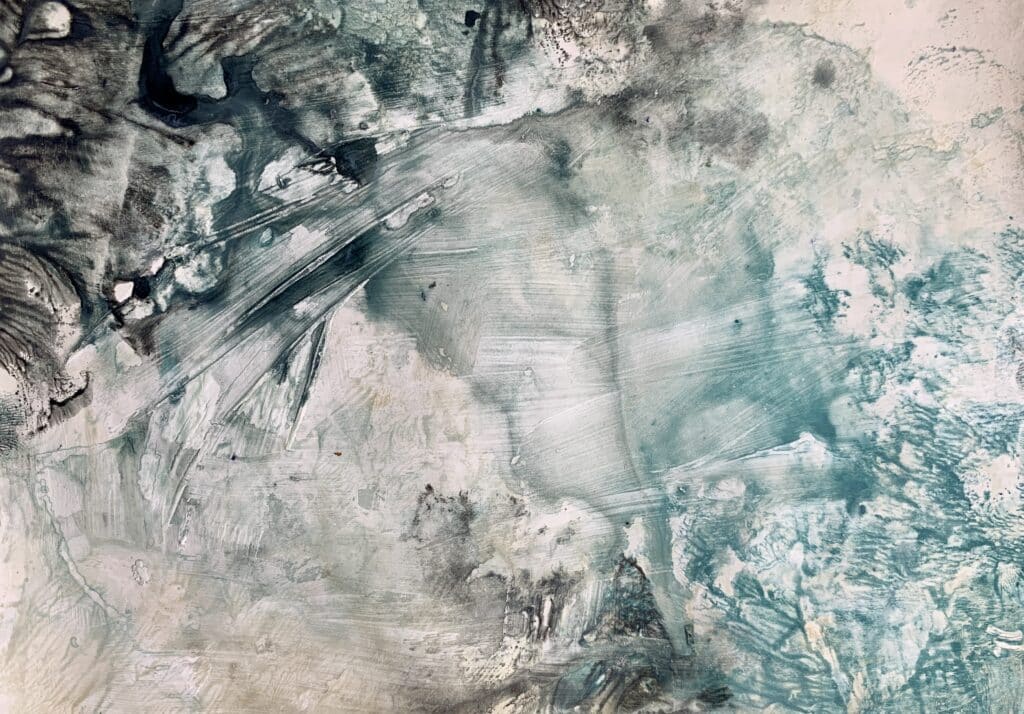Creating art is more than just putting marks on paper—it’s about expressing your emotions, connecting with your inner self, and letting your intuition guide you. Today, I want to share a simple yet powerful process for creating a beautiful, emotionally resonant background using soft pastels, gesso, and a few intentional techniques. This background can serve as a collage paper, be an artwork in itself, or become the starting point for a larger piece. Let’s dive into this creative journey together.
Step 1: Expressive Mark-Making with Soft Pastels
The first step is to let loose with your soft pastels. But there’s more to it than just scribbling away—this is where your emotions come into play.
Explore Pressure Variations: As you move your pastel across the paper, try pressing harder to create bold, intense marks. Then, lighten your touch to produce delicate, airy strokes. Notice how the pressure you apply changes the mood of the marks. Think of this as a dance between tension and release, where every stroke reflects a different facet of your feelings.
Play with Mark Thickness: Next, experiment with creating both thick and thin lines. Observe how these contrasting marks interact on the page. The thicker lines might represent bold decisions or strong emotions, while the thinner ones might evoke subtlety or hesitation. Together, they build a layered story on your paper.
Balance Scribbles with Patterns: Now, let your instincts guide you as you alternate between spontaneous scribbles and simple, intentional patterns like circles or lines. Ask yourself: Do you need the freedom and chaos of scribbles, or are you drawn to the comfort and order of repeating patterns? Both have their place, and both can speak to different parts of your experience.
Step 2: Blending with Gesso: Creating a Gentle Aesthetic
Once you’ve filled your page with pastel marks, it’s time to introduce gesso. This step is all about softening and blending, creating a soothing, aesthetically pleasing background.
Begin with a Dry Brush: Start by lightly brushing gesso over your pastel marks. As the gesso mixes with the pastels, you’ll notice the white of the gesso becoming tinted with subtle colors. This process can feel almost meditative—there’s a calmness in watching the colors merge and soften into a gentle background.
Choose Your Background Hue: The pastel color you choose to blend with the gesso will significantly influence the mood of your background. For example, if you choose black, the resulting hue will be a soft, comforting grey. If you opt for raw umber, you’ll get a muted, peaceful green. Let your choice reflect the mood you want to evoke in your piece.
Step 3: Embrace Contrast: Blend and Preserve
The final step in this process is about making choices—choosing which marks to blend and which to preserve. This is where the emotional depth of your piece really starts to take shape.
- Selective Smudging: As you blend the gesso with the pastel, be mindful of the marks you’re covering. Some marks, especially those made with high pressure, might feel too significant to lose. Leave them untouched, allowing them to stand out against the softer background. This contrast between blended and unblended areas adds intrigue and depth to your work. Trust your instincts here—let the marks that resonate with you remain visible.
Through these steps, you’re not just creating a background; you’re building an emotional landscape on your paper. Each choice—whether it’s the pressure of a mark, the thickness of a line, or the decision to blend or preserve—reflects your inner world. This process invites you to connect deeply with your art, to let your intuition lead, and to create something that is uniquely yours.
Whether this background becomes part of a larger piece, a collage, or an artwork in itself, it will carry the emotional weight of your creative journey. So, take your time, enjoy the process, and let your emotions guide you as you create.



